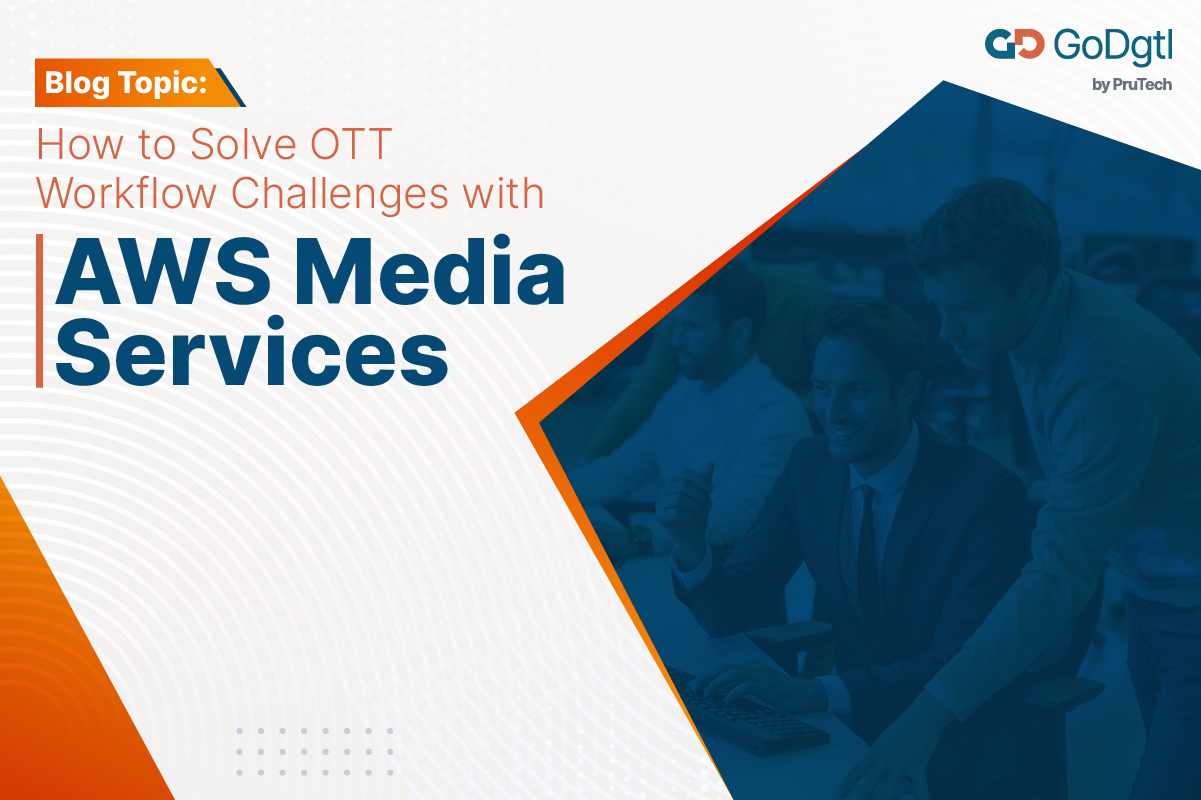The OTT market today is a crowded subway with the likes of Netflix, Amazon Prime Video, Disney Plus, HBO Max, and Hulu. In such a scenario, OTT players need to tackle not just growing competitive intensity but also ever-changing customer preferences. The exploding OTT market is estimated to achieve close to 510 million users by 2026, garnering a revenue of over $3.76 billion by 2027. Although it became an everyday household necessity during the pandemic, the rising number of competitors drives the market towards a saturation point.
Only through a streamlined OTT workflow will enable seamless video content delivery to millions of devices across the globe. To keep their customers engaged, you need high-quality streaming, faster content delivery, and a personalized experience.
However, the road to building an efficient OTT workflow is a challenging one. In this article, we’ll explore these challenges and how they can be solved with AWS media services.
The history of OTT
OTT or over-the-top refers to a media service that facilitates live and on-demand video streaming direct to customers over the web. This service is provided through apps available across devices like Android, Smart TV, Apple TV, Windows, and Chromecast. The emergence of OTT led to viewers canceling traditional TV cable, a phenomenon referred to as cord-cutting. Interestingly, OTT isn’t just restricted to entertainment, There are immense opportunities in other industries such as education and fitness as OTT also refers to audio streaming and telecommunication services.
OTT workflow challenges
OTT has a tremendous growth opportunity owing to the meteoric rise in both demand and supply of on-demand video. However, enterprises need to be cautious when launching OTT services. Running end-to-end OTT workflows smoothly has many challenges as listed below:
Lack of flexible infrastructure
The supply chain of OTT solutions is complex and unique to each platform. In such a scenario, a templatized solution won’t cut it. You need to pick a flexible solution with workflows that allow easy integration with third-party services like content management systems and quality control tools through APIs.
Limited features
With an increasing focus on personalization, you will have to build an application with innumerable features. These features vary with respect to the kind of broadcasting services you offer. Some of the most common options that constitute a feature-rich app include content access mechanism, delivery protocols, advanced audio features, etc.,
Restricted scalability
One major appeal of OTT is the wide range of on-demand videos available across multiple devices and locations at the same time. To ensure high-quality streaming in such a distributed and diverse ecosystem, your workflows should be highly scalable with adaptable frameworks.
Static workflow frameworks
Every OTT platform has workflows that are entirely unique to itself. Although it stems from the need to deliver a distinct customer experience, it makes the ‘one size fits all’ notion impractical. Even simple differences such as metadata (title, description, and cast) and ad placements need customized workflows. They need to cater to the brand’s specific requirements and approach.
AWS tackle OTT workflow challenges
To effectively manage these challenges, OTT players need a management tool that facilitates a seamless customer experience. Float Left’s Application Management Portal (AMP) built using AWS is an ideal product to simplify OTT management. Its inception was aimed at helping online video platforms rapidly adapt to changing content delivery preferences of the users. Supporting streaming on CTV devices like gaming consoles and smart TVs has been game-changing.
Built on multiple AWS platforms like Amazon S3, EC2, Lambda, and DynamoDB, AMP enables you to manage both content and application. With it, you can customize your customer’s screen layout alongside managing content playlists and assets. Unlike with traditional CMS, you can build and implement such fragmented and complex workflows within days. This helps you not just keep pace with market changes, but also beat it.
Let’s take a look at all the AWS Media Services elements that make AMP the ideal OTT management platform.
Amazon S3
Forming an incredible bridge between the servers and the app, Amazon S3 (Amazon Simple Storage Services) empowers you to store your assets dynamically enabling high availability. S3 achieves this by categorizing all the data into different buckets. So that whenever your user triggers a request at runtime, the appropriate file is loaded and delivered on the screen.
Amazon CloudFront
This tool works as an agent between the S3 and the application. This software layer creates redundancy to enable faster data delivery.
Amazon EC2
To accommodate changing demand volumes, AMP utilizes Amazon EC2 (Amazon Elastic Cloud Computing). It automatically creates and destroys instances in line with the incoming requests. Upon receiving an app request, a virtual server is instantiated. It is terminated once the request is addressed.
AWS Lambda
When your user initiates a request, Lambda translates this query into an executable code. It allows you to look through the databases for the information you are seeking in a completely automated workflow.
Amazon DynamoDB
When you enter a query, Lambda functions communicate with DynamoDB instances for real-time data delivery onto your screen. DynamoDB is a NoSQL database and differs from traditional tables by focusing only on key-value pairs. This approach makes it a tremendously efficient process to transfer data to the APIs.
OTT is a very powerful content delivery method as it has magnificent scope for personalization specific to every single user. The depth of personalization is going to be the key to offering an appealing customer experience. With several big players in the arena, the OTT players need to tailor-make their services accurately. This is only possible by using a solution that allows workflows driven by artificial intelligence and machine learning.
Conclusion
As an Advanced Consulting Partner of AWS, GoDgtl assures your business success by using cloud technologies to manage your OTT services. Our capabilities include scalable computing and storage for databases and analytics among other functionalities; unlike the legacy models that delayed the OTT app launch by months. GoDgtl enables designing, testing, and deploying your infrastructure within days. To learn more, contact us Contact 24/7 – GoDgtl (go-dgtl.in).

